| Photojournal
- 15
August 2004
Three
lifers in one minute
|
The 15th of August
was a Sunday, and a warm one at that. I just hung around home
in the morning and went out with my camera in the late afternoon,
around 5:30. I headed down to Ladner Trunk Road and Boundary Bay.
On one of the roads
between the dyke and Ladner Trunk Road, I was stopped by a passing
freight train. This is one of the unit trains that takes coal
down to the Roberts Bank superport; here it is returning, empty,
to the coal mines.
|
|
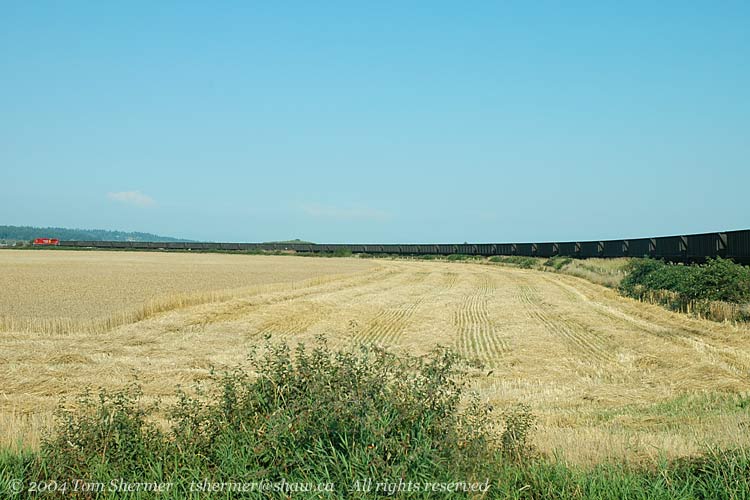 |
|
A unit train is a train
that hauls only one type of cargo.
A little later I was
back out on Ladner Trunk Road and saw a hawk hovering over a field.
It was a Northern Harrier (a.k.a. Marsh Hawk). Their white rump
is fairly distinctive.
|
|
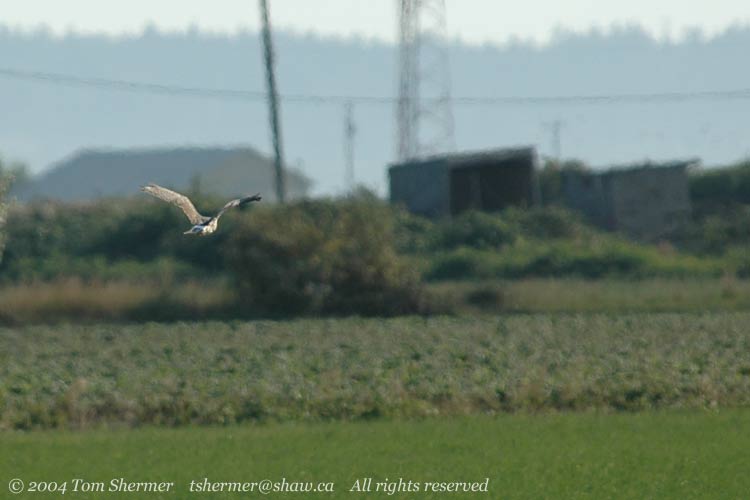 |
|
The harrier flew along
and landed in the field a few times, and I gave chase in my car.
Here's the last takeoff I saw him do; after this he headed straight
away from the road before disappearing behind a hedge.
|
|
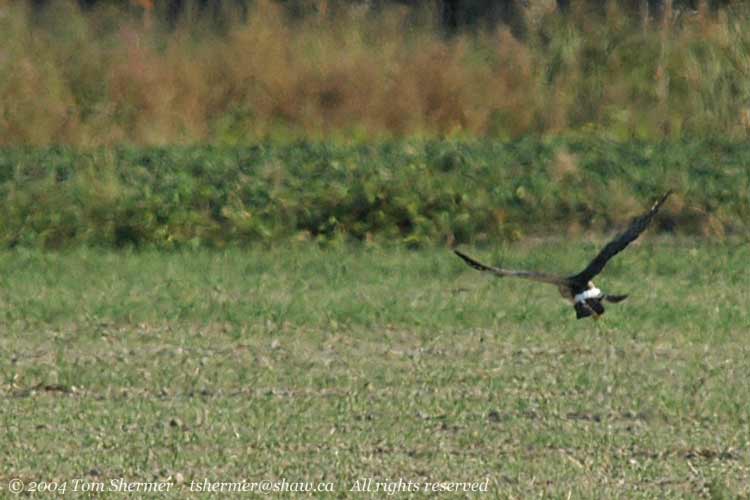 |
|
Heading towards the
dyke on the next road I encountered, I found a couple of sheep
on a berm beside the road.
|
|
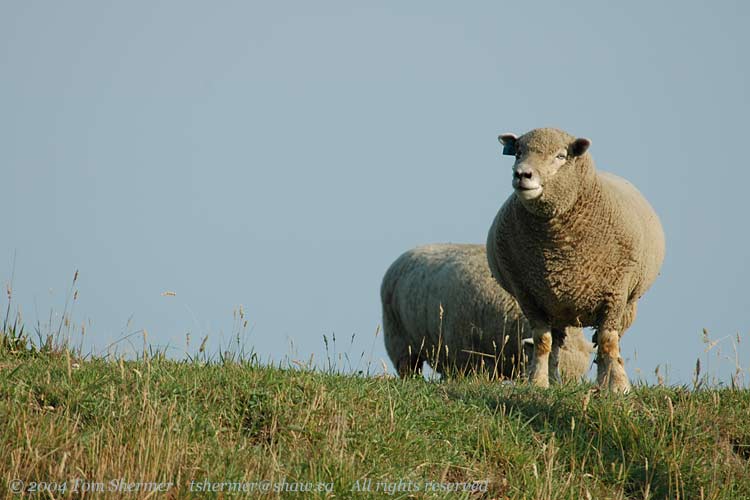 |
|
A horse was in the
same little fenced-off piece of land.
|
|
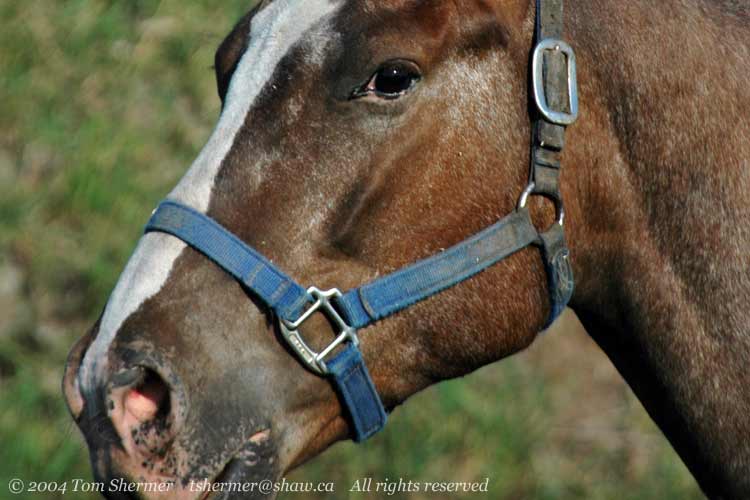 |
|
As is quite common
in this area, there were many European Starlings perched on the
power and telephone wires. It may be a common bird, but I like
the starling's markings.
|
|
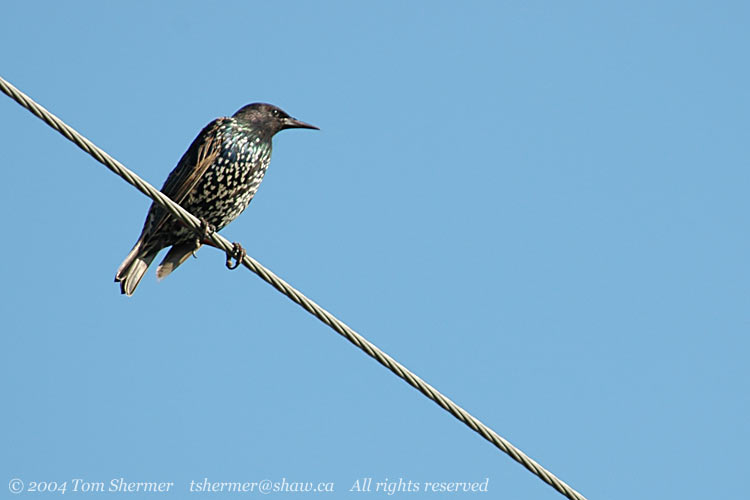 |
|
Since I was relatively
near the ferry jetty, I headed on over to it, hoping to find the
birds that I didn't find the day before. I parked at "windsurfer's
corner", a little parking lot before the main ferry terminal
entrance. As I set my tripod up there, I saw a bird on the water
that I thought was a cormorant of some sort. I've seen cormorants
from the ferry jetty before. I took a few photos of the bird as
it drifted away towards shore, occasionally diving after some
food. Its dives didn't look like the usual cormorant dives.
When I got a chance
to look at the photos at home, I saw that the neck and bill were
wrong for a cormorant, and what I had seen was a Common Loon.
The Common Loon is, well, relatively common, but I had never seen
one before...it was a lifer for me. ("Lifer" is a term
used by birders to denote the first bird of a species that one
ever sees; it comes from the fact that many birders keep a "life
list", which is a list of all of the birds that they've seen
in their life. A lifer is then a bird that you can add to your
life list.) Here's my lifer loon.
|
|
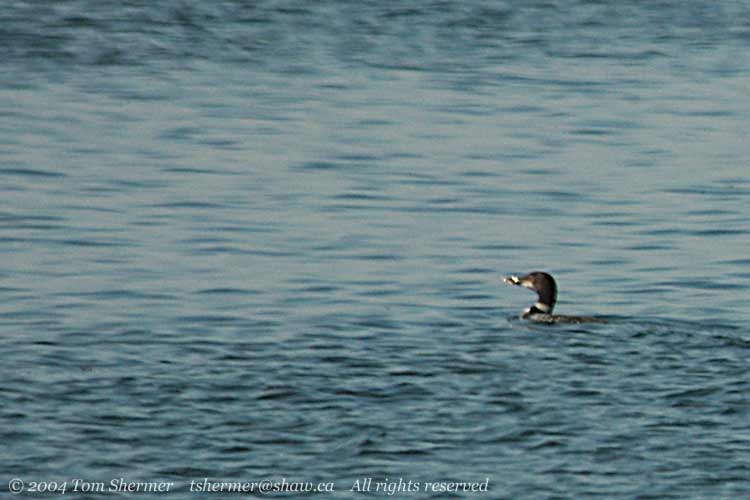 |
|
He was just at the
range of what my camera optics will pull in, so it's not a very
clear shot.
I watched a kildeer
run down the beach through my binoculars, and then headed off
the other direction to the Compensation Lagoon. When I got there,
I went a couple of paces from the road and set up next to a big
pole that holds a traffic sign over the road. The birds are accustomed
to the pole (and its large concrete base) being there, and if
I'm behind it I don't look so obviously big and human and threatening.
This means there's less stress on the birds and better pictures
for me, because they're less likely to fly away.
The Caspian Tern flock
that was there the day before was there again.
|
|
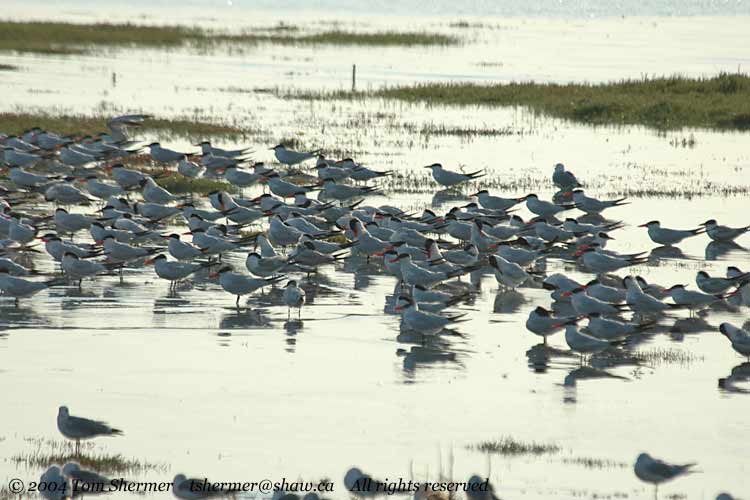 |
|
As I was taking pictures
of the terns, I was approached by another birder. I had been concentrating
on taking photos and didn't hear or see his approach, so it startled
me when he talked.
He had come over to
me from where he was (a little further up the road) to point out
some interesting birds; he was afraid that I would have left without
seeing them. He was probably right in this fear.
First he showed me
a Franklin's Gull that was in amongst the other gulls and terns.
The Franklin's Gull was a lifer for me. Then he turned his spotting
scope to the side and pointed it at a little mound, where there
were a Whimbrel and three Marbled Godwits. Both of those were
lifers for me, too. So in the space of a minute, he showed me
three lifers that I probably would have missed. Cool!
Once he showed them
to me on his scope, I was able to find them in my camera (although
the image was not as magnified as he got with his scope). Here's
the Franklin's Gull. He's the one just right of center with the
black face and white ring around the eye. His mantle is a little
darker than the other gulls, and his tail does not extend as far
back. He's in his winter (nonbreeding) plumage; in the summer
the front part of his face would be black, too.
|
|
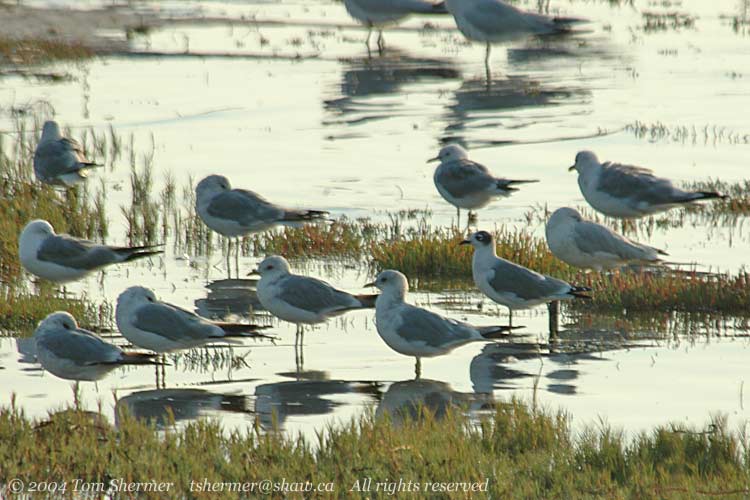 |
|
The big shorebirds
(Whimbrel and Marbled Godwits) were a lot further off and harder
to photograph. I had to put a teleconverter on the camera to increase
the magnification; this gives worse image quality in the best
of situations, but here wasn't the best. It had started to get
dark, and teleconverters eat light for breakfast. It all works
out to grainy pictures of the shorebirds. Anyway, here's a group
shot; the Whimbrel is on the left, with wings outstretched. The
Marbled Godwits are the three resting birds to the right.
|
|
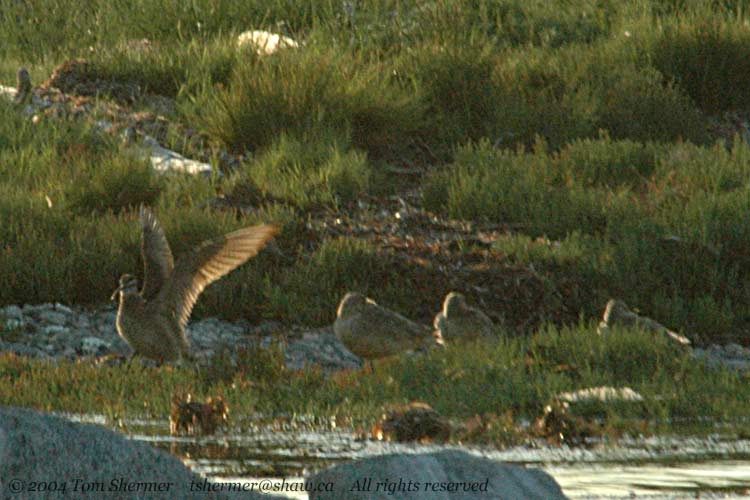 |
|
Whimbrels have a fairly
long bill that has quite a downward curve to it. They also have
a striped head, as you can see. It's quite a neat bird.
Here's another photo
of the group, when two of the godwits are awake and peering about.
|
|
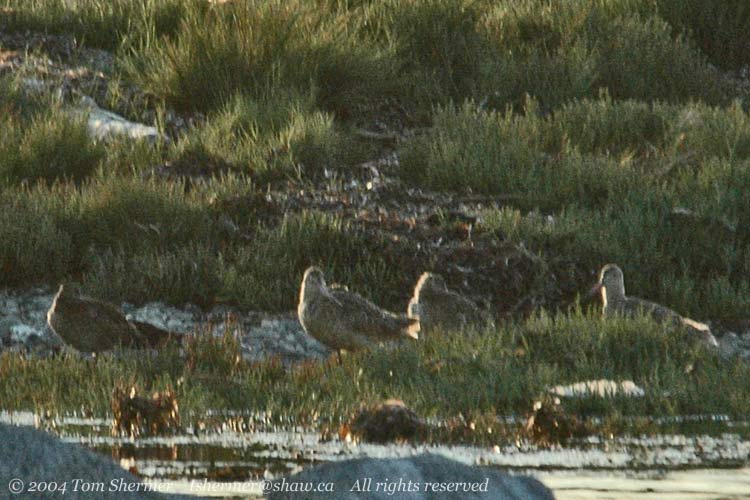 |
|
Marbled Godwits have
fairly long bill with a slight upward curve to it. They have a
lighter overall color than the Whimbrel. They're supposed to be
quite pretty in flight, with a light-cinnamon-colored underwing
and an orange wing top. Unfortunately, these guys just sat there
while I took pictures of them in the gathering gloom.
So when enough gloom
had gathered to render my efforts useless, I packed up and headed
home. I thought about staying and shooting the sunset again, but
I was tired and figured I wouldn't get anything much different
from what I got the day before.
All in all, though,
a pretty darned good day. Four lifers, all within a space of about
15 minutes. Sometimes it's good to meet up with more experienced
birders...especially ones with good optics.
Your Whimbrel-lovin'
fool,
Tom
|
|
|